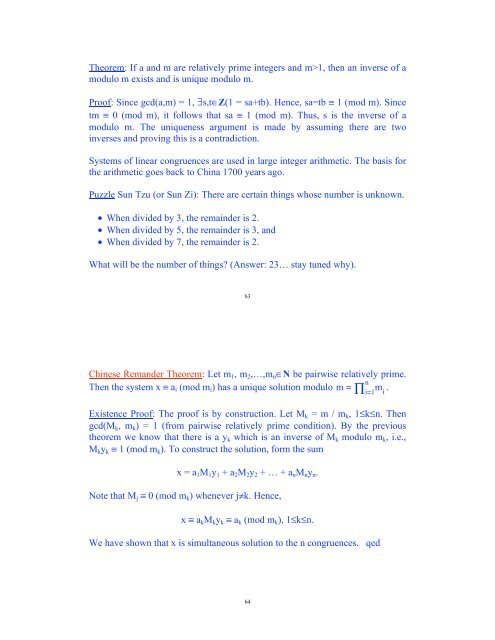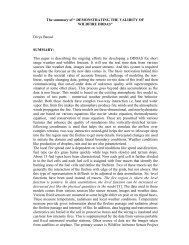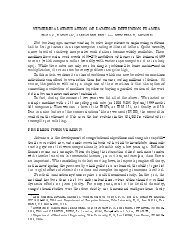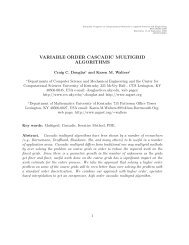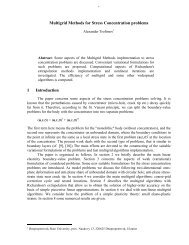Discrete Mathematics University of Kentucky CS 275 Spring ... - MGNet
Discrete Mathematics University of Kentucky CS 275 Spring ... - MGNet
Discrete Mathematics University of Kentucky CS 275 Spring ... - MGNet
You also want an ePaper? Increase the reach of your titles
YUMPU automatically turns print PDFs into web optimized ePapers that Google loves.
Theorem: If a and m are relatively prime integers and m>1, then an inverse <strong>of</strong> a<br />
modulo m exists and is unique modulo m.<br />
Pro<strong>of</strong>: Since gcd(a,m) = 1, )s,t,Z(1 = sa+tb). Hence, sa=tb ' 1 (mod m). Since<br />
tm ' 0 (mod m), it follows that sa ' 1 (mod m). Thus, s is the inverse <strong>of</strong> a<br />
modulo m. The uniqueness argument is made by assuming there are two<br />
inverses and proving this is a contradiction.<br />
Systems <strong>of</strong> linear congruences are used in large integer arithmetic. The basis for<br />
the arithmetic goes back to China 1700 years ago.<br />
Puzzle Sun Tzu (or Sun Zi): There are certain things whose number is unknown.<br />
• When divided by 3, the remainder is 2.<br />
• When divided by 5, the remainder is 3, and<br />
• When divided by 7, the remainder is 2.<br />
What will be the number <strong>of</strong> things? (Answer: 23… stay tuned why).<br />
63<br />
Chinese Remander Theorem: Let m 1 , m 2 ,…,m n ,N be pairwise relatively prime.<br />
n<br />
Then the system x ' a i (mod m i ) has a unique solution modulo m = ! .<br />
i=1<br />
m i<br />
Existence Pro<strong>of</strong>: The pro<strong>of</strong> is by construction. Let M k = m / m k , 1;k;n. Then<br />
gcd(M k , m k ) = 1 (from pairwise relatively prime condition). By the previous<br />
theorem we know that there is a y k which is an inverse <strong>of</strong> M k modulo m k , i.e.,<br />
M k y k ' 1 (mod m k ). To construct the solution, form the sum<br />
x = a 1 M 1 y 1 + a 2 M 2 y 2 + … + a n M n y n .<br />
Note that M j ' 0 (mod m k ) whenever j-k. Hence,<br />
x ' a k M k y k ' a k (mod m k ), 1;k;n.<br />
We have shown that x is simultaneous solution to the n congruences. qed<br />
64


